
-
Find the right food for your pet
Take this quiz to see which food may be the best for your furry friend.
Find the right food for your pet
Take this quiz to see which food may be the best for your furry friend.
Featured products
 Small & Mini Savory Stew with Chicken & Vegetables Dog Food
Small & Mini Savory Stew with Chicken & Vegetables Dog FoodA delicious complement to the nutrition of Science Diet Small & Mini 7+ dog food
Shop Now Adult 7+ Perfect Digestion Chicken, Whole Oats & Brown Rice Recipe Dog Food
Adult 7+ Perfect Digestion Chicken, Whole Oats & Brown Rice Recipe Dog FoodScience Diet's breakthrough nutrition supports ultimate digestive well-being & healthy microbiome for dogs age 7+
Shop Now Adult Healthy Cuisine Roasted Chicken, Carrots & Spinach Stew Dog Food
Adult Healthy Cuisine Roasted Chicken, Carrots & Spinach Stew Dog FoodDelicious roasted chicken paired with tender vegetables in a succulent stew
Shop NowFeatured products
 Adult 7+ Tender Tuna Dinner Cat Food
Adult 7+ Tender Tuna Dinner Cat FoodWith delicious chunks in a decadent gravy
Shop Now Adult 7+ Senior Vitality Chicken & Vegetable Stew Cat Food
Adult 7+ Senior Vitality Chicken & Vegetable Stew Cat FoodImproves Everyday Ability to Get Up & Go
Shop Now Adult Savory Entrée Can Variety Pack Cat Food
Adult Savory Entrée Can Variety Pack Cat FoodPrecisely balanced nutrition with the delicious taste of savory minced chicken to help fuel the energy needs of cats during the prime of their life
Shop Now -
Dog
- Dog Tips & Articles
-
Health Category
- Weight
- Food & Environmental Sensitivities
- Urinary
- Digestive
- Joint
- Kidney
-
Life Stage
- Puppy Nutrition
- Adult Nutrition
- Senior Nutrition
Cat
- Cat Tips & Articles
-
Health Category
- Weight
- Skin & Food Sensitivities
- Urinary
- Digestive
- Kidney
-
Life Stage
- Kitten Nutrition
- Adult Nutrition
Featured articles
 Does My Pet Hate Me?
Does My Pet Hate Me?Learn tips for bonding with your pet if you've ever thought, 'My dog doesn't like me, or 'Why do I have a standoffish cat?'
Read More Why Are Dogs and Cats So Cute?
Why Are Dogs and Cats So Cute?If waggy puppy dog tails and furry kitten yawns make you swoon, you're not alone. Why are cats so cute? And, dogs too! Let's find out!
Read More Do Dogs and Cats have Belly Buttons?
Do Dogs and Cats have Belly Buttons?Learn whether cats & dogs have belly buttons like humans, what the function is, and if there are any health concerns associated with it.
Read More -


If you share your life with a cat, you might know that litter box problems aren't uncommon. However, the particular affliction of bladder stones in cats doesn't receive the attention that it should. Read on to learn about the most common types of feline bladder stones — calcium oxalate and struvite — including how to prevent and treat them.
Basic Facts About Bladder Stones in Cats
Bladder stones, or uroliths, are simply organized accumulations of hardened minerals that are found in urine. They can occur anywhere along the urinary tract, from the kidneys all the way to the urethra — the narrow tube that carries urine from the bladder to the outside of the body.
Stones range in size. Your cat could have a tiny stone or one the size of their bladder. Stones also range in shape and color. They can be smooth or have jagged edges. Stones pose problems because they can damage the surrounding tissue, cause inflammation, scar tissue and predispose a cat to infection, especially if they have rough or jagged edges.
Crystals vs. Stones
If you've heard of urine crystals, you might be wondering how they differ from bladder stones. According to the Merck Veterinary Manual, when crystals clump together and grow, becoming visible to the naked eye, the result is called a stone. However, it should be noted that crystals may be present in certain urinary environments that favor the formation of a stone but is not a definitive precursor.
Clinical Signs of Bladder Stones in Cats
The signs that cats with bladder stones display differ depending on where the stones are located in the urinary tract. Many times, cats with bladder stones exhibit no signs at all. Other times, the stones may cause bladder irritation or infections, which may present as frequent trips to the litter box, frequent urination, blood in the urine, vocalizing while urinating, urinary accidents and decreased urination.
If a urinary stone becomes stuck, it may cause urinary obstruction also known as a blocked urethra so the cat cannot urinate at all. This is a life-threatening condition that requires prompt intervention. This is most often seen in male cats. If you notice your cat trying to urinate, but doing so unsuccessfully, you should see your veterinarian promptly. It's also important to consider that a cat with urinary obstruction may act like they're constipated. While the behavior may look similar, the results can be drastic — if you notice this behavior, it is likely a good idea to call your local vet to get their recommendation.
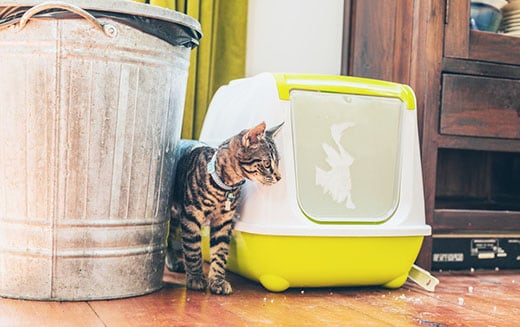


Tasty Tips
Types of Bladder Stones in Cats
The two most common types of bladder stones in cats are struvite stones and calcium oxalate stones. According to the American College of Veterinary Surgeons, while the development of these stones is complex, a cat's food may play a role. They also rarely form secondary to bladder infections in cats.
Radiographs and a microscopic exam of urine sediment may provide indications as to what type of stone your cat has. However, the identity of a stone cannot be determined unless it is collected and analyzed.
Calcium Oxalate Stones
Calcium oxalate stones are the most common urinary stone in cats, according to the Merck Veterinary Manual. They're most often seen in middle-aged to older cats. Breeds most likely to develop calcium oxalate stones include the Ragdoll, British shorthair, exotic shorthair, Himalayan, Persian and Scottish fold. Calcium oxalate stones can form in overly acidic urine. They may be seen in cats with elevated blood and urine calcium levels secondary to a condition called idiopathic hypercalcemia or in cats with chronic kidney disease.
This type of stone requires surgical removal. Infections and underlying conditions must also be treated. Once the stones have been removed, switching your cat to a therapeutic food formulated to reduce urine mineral content and increasing their water intake — by switching them to wet food, for example — may help prevent a recurrence. It's necessary to have your cat adhere to your veterinarian's recommended meal plan.
Struvite Stones
Struvite stones are typically found in younger cats who've been neutered. Unlike calcium oxalate stones, struvite stones in cats tend to form in highly concentrated alkaline urine. While any breed can be affected, those most at risk are the domestic shorthair, exotic shorthair, Ragdoll and Himalayan. Cats who consume high amounts of magnesium, phosphorus, calcium, chloride and fiber are also more likely to develop struvite stones.
A special therapeutic food, such as Hill's Prescription Diet, can help dissolve struvite stones. Therapeutic urinary foods come in a variety of flavors and forms and therapeutic treats may be available so your cat will not be deprived. In many cases struvite stones can be dissolved quickly. One study showed that stones were, on average, 50% smaller in just 2 weeks and the average time to completely dissolve stones in about a month. In most cases, it's recommended that a cat remain on a therapeutic food to prevent stones from returning. This is becase while a cat that may no longer be symptomatic of urinary issues, recurrence is possible if the cat resumes eating a food that contributed to stone formation in the first place. Keeping your cat on a pet food formulated for urinary health may help extend the time between urinary problems.
While bladder stones in cats have a high recurrence rate, they can be successfully treated. Together you and your veterinarian can determine the right therapy or combination of therapies to keep the stones at bay.


Dr. Laci Schaible is a small animal veterinarian, veterinary journalist, and a thought leader in the industry. She received her Doctor of Veterinary Medicine from Texas A&M University and her Masters in Legal Studies from Wake Forest University.
Related products
Related articles
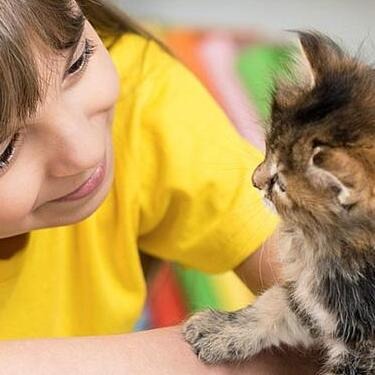
Discover how to train your cat, starting with very basic first steps that both reward good behavior and discourage the bad.
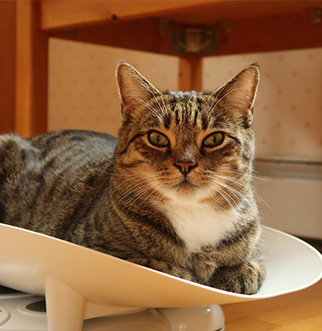
How do you get a cat to lose weight? Learn all about cat foods for weight loss, including how to choose weight control cat food and exercise tips.
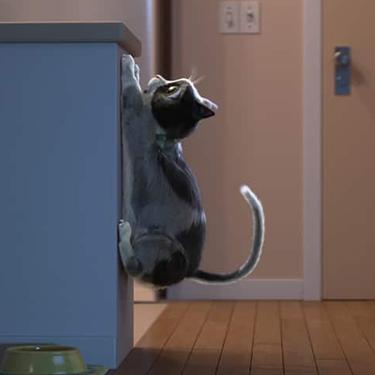
What is the best food for an overweight cat? Learn all about weight control food for cats, including what's in it and how it works.
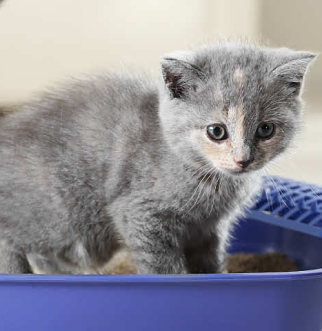
Cats are naturally very clean and chances are your kitten will already have learned how to use the litter box from her mother before she comes to live with you.

Put your cat on a diet without them knowing
Our low calorie formula helps you control your cat's weight. It's packed with high-quality protein for building lean muscles, and made with purposeful ingredients for a flavorful, nutritious meal. Clinically proven antioxidants, Vitamin C+E, help promote a healthy immune system.
Put your cat on a diet without them knowing
Our low calorie formula helps you control your cat's weight. It's packed with high-quality protein for building lean muscles, and made with purposeful ingredients for a flavorful, nutritious meal. Clinically proven antioxidants, Vitamin C+E, help promote a healthy immune system.

